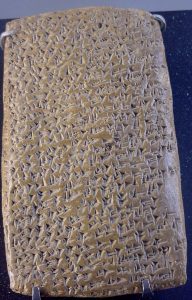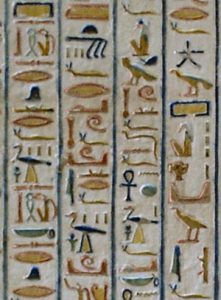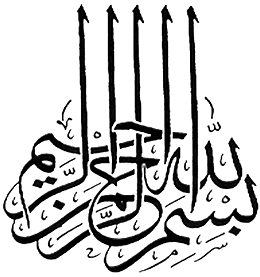
Cuneiform tablet from West Asia
Most people in the ancient Mediterranean and West Asian areas spoke languages that divided into two groups. One language group is Indo-European and the other group is Semitic. In southern Africa, most people spoke either a Bantu language or a Khoisan language. Indian people spoke Dravidian languages. Central Asian people spoke variations of Turkic languages. Chinese people spoke different kinds of Chinese. In Japan, they spoke Japanese. Across the Pacific Ocean, in the Americas, there were a lot of Native languages.

Egyptian hieroglyphs on a New Kingdom temple wall (Luxor)
The Indo-European language group probably got started between the Black Sea and the Caspian Sea, in modern Georgia (see map). Around 3000 BC some of the people who spoke this language moved away. Some of them went west toward the Atlantic Ocean. These people are the Celts. They speak the Celtic languages: Gaelic, Welsh, Breton and Cornish. Another group went east toward China. They’re the Tocharians, but nowadays they speak Chinese.
A little later, other Indo-Europeans went around the Black Sea toward the Mediterranean or south to West Asia. Some of them settled in Italy, where Indo-European became Latin. Others settled in Greece, where Indo-European became Greek.In northern Europe, Indo-European turned into German, Danish, Swedish, and English. Some Indo-Europeans went to West Asia, where they spoke Hittite and Persian. And some went all the way south to India, where they spoke Sanskrit. The people who stayed where they were in the Balkans and Russia started to speak the Slavic and Baltic languages: Russian, Polish, Lithuanian.

Early Chinese writing: an oracle bone with Chinese characters written on it
A second group of Mediterranean people spoke Semitic languages. Semitic languages include Hebrew, Arabic, Aramaic (the language of Jesus and his disciples), Canaanite, Akkadian, Phoenician, Syriac. They’re also related to ancient Egyptian, modern Berber, and some of the languages of East Africa. People spoke Semitic languages in West Asia, in the Arabian peninsula, in North Africa and in East Africa.
Most likely the Semitic language group started out somewhere around Lebanon or Syria. It spread from there. Some people went east into Mesopotamia and others went south into the Arabian peninsula and Egypt (see map). Egyptian split off very early, and is very different from the other Semitic languages.

Arabic script writing the name of God (Allah)
Arabic seems to be the closest to what Semitic languages were like a long time ago. That’s probably because people who spoke Arabic lived isolated in the Arabian peninsula. They didn’t usually meet anyone who couldn’t speak Arabic. So their language didn’t change much. But the Jews and Phoenicians who lived along the Mediterranean coast were always talking to strangers. That changed their language more quickly.
When the Umayyads conquered North Africa and West Asia in the 600s AD, they brought Arabic with them to most of the Islamic Empire. Only in Iran, people kept on speaking the old Indo-European languages – Persian or Kurdish. Then not long afterward, Central Asian speakers of Turkic languages moved into West Asia. So people in Turkey learned to speak Turkish instead of Arabic.
Learn by doing: learn some words in another language
More about the Indo-Europeans
Bibliography and further reading about ancient languages:
In Search of the Indo-Europeans: Language, Archaeology, and Myth by J. P. Mallory.
Empires of the Word : A Language History of the World, by Nicholas Ostler (2005).




